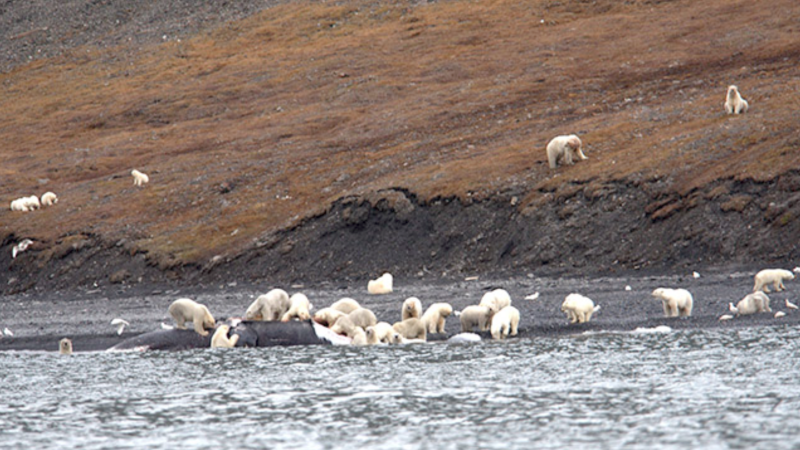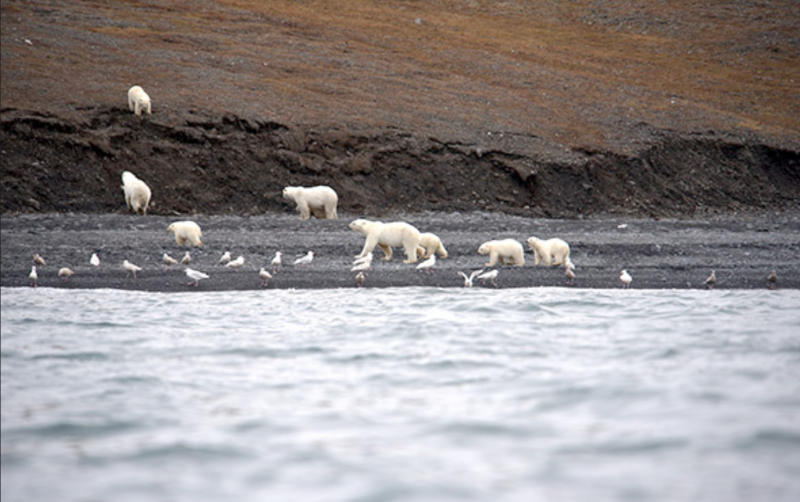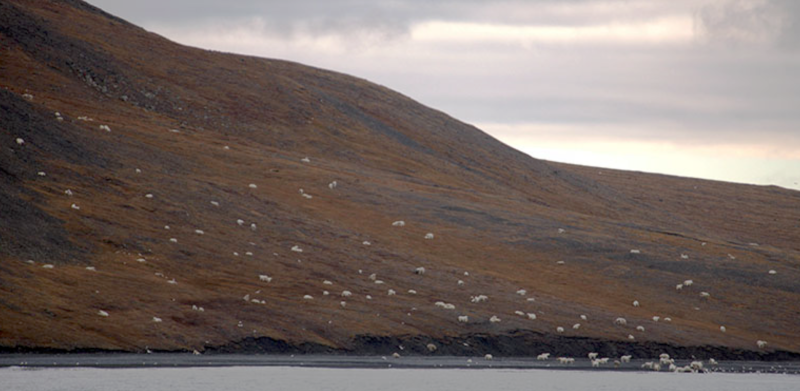News
Indescribable Photos Show 150+ Hungry Polar Bears Feasting On Whale Carcass

As a result of global warming, species that live in frigid climates — such as the Arctic — are finding it increasingly difficult to survive. With melting glaciers comes a loss of habitat, and the lack of ice has resulted in just 26,000 polar bears remaining on the planet.
Under the U.S. Endangered Species Act, the polar bear is considered “vulnerable.” Fortunately, at least 100 of the bears — or 1% of the Earth’s polar bear population, had a nourishing dinner recently when a bowhead whale carcass washed ashore near the Northern coast of Siberia.

Credit: Alexander Gruzdev, Wrangel Island State Nature Reserve
Gizmodo reports on September 19, hundreds of polar bears descended on the carcass near the remote Wrangel Island State Nature Reserve. It was a true Siberian feast for the mammals that are threatened primarily by climate change.
In a blog post, Rodney Russ, the Expedition Leader, Owner, and Founder of Heritage Expeditions, wrote: “You had to live it to believe it, even now there are people pinching themselves to make sure it really happened.” According to Russ, at least 150 polar bears were chowing down on the whale. A Wrangel Island news release, however, cites 230 as the most conservative estimate.
The bears were not deterred by the presence of humans, which is why this development is so unique. Scientists from Chukotka, Siberia and as far away as Alaska have been analyzing the footage and making observations.

Credit: Alexander Gruzdev, Wrangel Island State Nature Reserve
One thing is for sure: tourists will never forget this experience. Russ wrote that the group launched inflatable rafts, “for a closer look and that is the memory we will all carry with us. There are no words to describe it.”
Though the polar bear is not “endangered,” their numbers are dwindling. If humans fail to adopt sustainable habits and reduce carbon emissions, the mammals may go extinct before future generations have the opportunity to sustain conservation efforts.

Credit: Alexander Gruzdev, Wrangel Island State Nature Reserve
Simple ways you can save the polar bears include:
- Turning off lights and unplugging appliances when they are not in use
- Conserving water by taking shorter showers and consolidating laundry loads
- Taking reusable bags to the store, rather than collect hoards of plastic ones
- Recycling whenever possible, reusing items, and shopping second-hand
- Composting left-overs in a backyard garden, as well as growing your own produce
- Walking and/or cycling, versus driving your car when possible
These are but a few ways you can benefit the environment and ensure polar bears live on for many centuries to come. Comment your thoughts below and please share this news!
h/t Gizmodo, Wrangel Island State Nature Reserve
Typos, corrections and/or news tips? Email us at Contact@TheMindUnleashed.com
